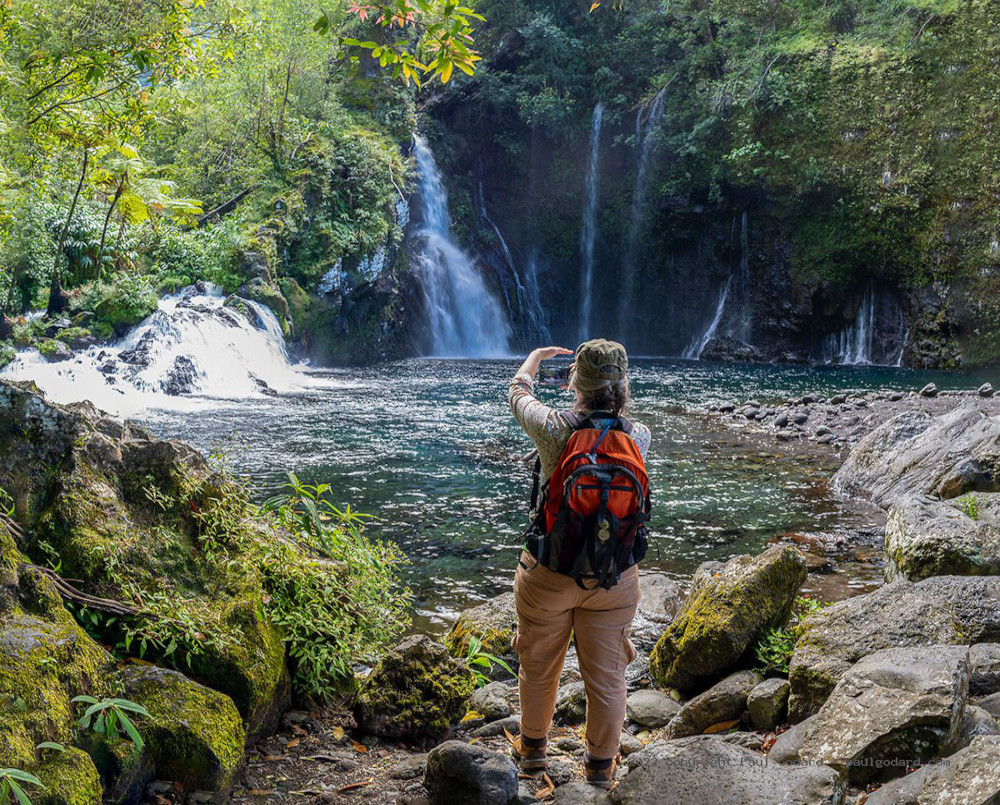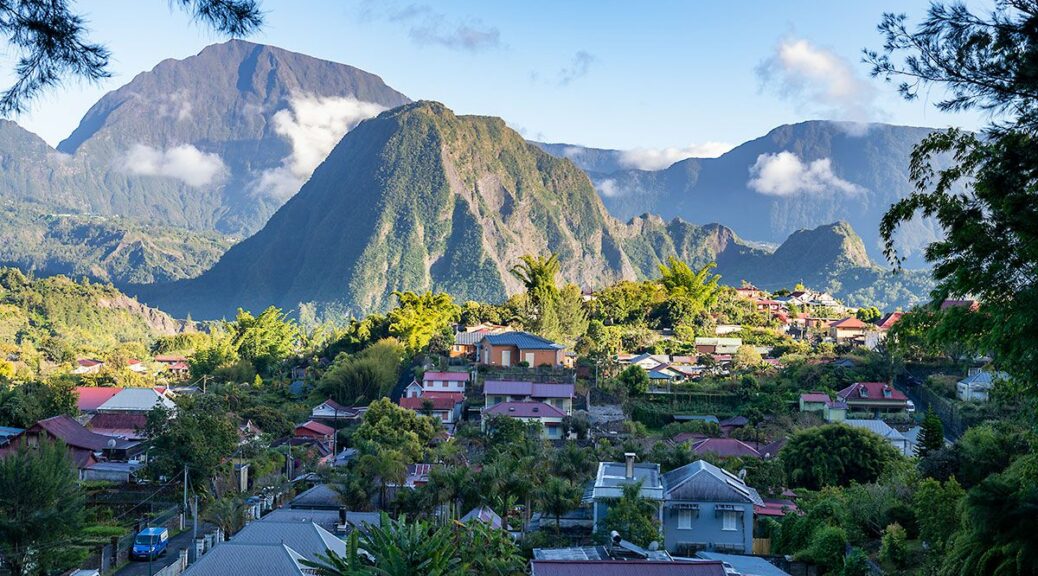Tracks4Africa users travel all over Africa – including the islands off the continent’s east coast. When we heard that photographer Paul Godard had visited the island of Reunion, we wanted to know more about his trip.
What are your impressions of Reunion?
The natural beauty is spectacular: the jagged peaks and deep gorges, sandy plains and lava fields, luxuriant vegetation and sandy beaches. We walked through dense forests with tree trunks covered in moss, admired waterfalls cascading over steep cliffs and several times found ourselves up in the clouds.

What is it like driving on the island?
We were surprised by the amount of traffic, not only between the major cities along the northern coast but also in the intricate network of small roads on the mountain slopes. As one of our hosts told us, it takes time to drive around Reunion!
In places the roads are so narrow that passing other vehicles, especially trucks and buses, prove quite a challenge. While I drove our little rental vehicle, my partner, Lisa kept a constant eye on how close the car came to the steep drop.

What were some of the memorable roads you travelled?
We travelled the well-known Route des Laves, which runs along the east coast of the island and crosses recent lava flows. All along this national road you’ll see igneous rock formed by the lava. For us it was interesting to see the pioneering vegetation, including lichens and ferns. Another stunning drive was through a forest of tamarind trees on the way to Maido, which offers a panoramic view of the island’s west coast.

Then there was the road to Cilaos, also known as the 400-Curve Road. In several places it is not wide enough for two cars to pass, let alone two trucks! But, thanks to the many viewpoints, it is a good way to see the amazing scenery. The landscape is made up of gorges and mountain peaks and on every little plateau, the islanders have carved out space for a few houses [called ilet].
With such rugged territory, there must be places you can’t reach by vehicle.
Yes, when we went to Cirque de Mafate, we set off on foot with our backpacks. [A cirque is their name for the enormous crater shaped by a volcano; think of it as a natural amphitheatre.] There is no other way to get to Mafate – apart from helicopter. We spent five days walking between villages, overnighting in gîte (rural cottages). Many of the gîtes on Reunion provide home-cooked meals and sometimes we would sit down to four courses.
Given the landscape, there is a lot of up and down on the trails in Mafate. Distances between villages may not seem long, but the going is slow. At times, the trails lead through the forest or cling to the side of the mountain, then dip down to the bottom of the gorge.


What were the people like?
People are incredibly nice on the island and often willing to go the extra mile. More than once we got a lift from a local. When we encountered farmers on our walks, they would explain about their crops or show us their produce. The island is a religious place and along the roads and even on mountain paths, we frequently came across shrines where people could pray and leave offerings.
What did you eat and drink on the trip?
As Reunion is an overseas department of France, you can find good French cheese, charcuterie (cold meats), baguette and wine. This formed the base of most of our lunches and some dinners. We also found delicious coffee and French pastries. Chouchou (chayote) is a type of squash that grows everywhere on the island. The young stems are also edible and can be prepared similarly to Swiss chard. We got to taste chouchou in a variety of dishes: soup, gratin, even like potato chips. The local beer is called Dodo and rhum arrangé (rum with fruit) is the traditional drink.

What are must-do activities on the island?
Our trip was split into three parts, with more or less a week for each. Firstly, a road trip around the island, then hiking in Mafate and finally relaxing on the coast and snorkelling. I also climbed the Piton des Neiges, Reunion’s highest mountain at 3,070m. It involved an early start (05:30) from Cilaos and taking the bus to the trail head at 1,250m, but I reached the top before lunch. The views were absolutely amazing.

Is Reunion worth a visit?
I would certainly recommend it for nature lovers because of all the nature-based and water-based activities you can do. You can also get around with the very affordable and reliable local buses, which makes it cheaper than renting a car. People are extremely kind and the Creole/French food is amazing!
Thinking of visiting Reunion? Read the full report of Paul and Lisa’s three-week trip to Reunion. It’s packed with information on routes, viewpoints, places to stay and more, along with photographs of the island’s beauty.


Just a quick question about getting to Reunion. I’m on a motorcycles?????
To reach Reunion, you will first have to travel by plane or boat. You can rent motorbikes and scooters on the island.
Goodday,
Do South African citizens require a visa to visit Reunion. What requirements are needed and who flies to Reunion
Thank you
For holiday stays of up to 90 days, South African passport holders don’t require visas. Air Austral flies between South Africa and Reunion.